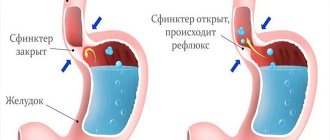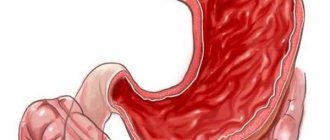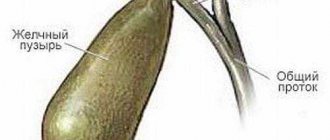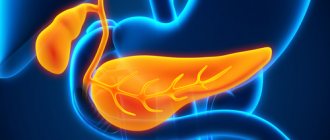A disease that is accompanied by the inability to move a bolus of food through a hollow muscular tube from the pharynx to the stomach is called esophagospasm in medical practice. This is a spasm of the esophagus.
The pathology is quite common in both men and women. But up to 40 years of age, representatives of the fairer sex are susceptible to this problem more often than men. By the age of 45, the indicators are compared.
Briefly about the disease
The normal condition of the esophagus involves the free movement of food and liquid through the esophageal tube. For a healthy organ, this function is not difficult. It happens naturally and completely unnoticeably.
The disturbance caused by various pathologies leads to the fact that such a common process as swallowing food becomes painful and is accompanied by contraction of the muscles of the organ in the form of spasms that frighten a person.
The reason for this is a sharp reduction in the diameter of the lumen of the esophageal tube in some of its parts, as a result of which the food bolus, instead of freely gradually moving through the smooth muscles of the esophagus, gets stuck in the area of narrowing of the organ.
The frequency and duration of spasms varies. There are isolated, instant cases. But long-term, frequently recurring spasms are also possible.
Spasmodic squeezing or a lump in the throat, in addition to painful sensations, causes anxiety and panic.
Having received information about the factors contributing to the occurrence of spasms, you can not only learn to prevent them, but also completely get rid of the negative manifestations of the pathology.
Esophageal spasm: symptoms
The clinical picture of the disease depends on the type and location of the spasm. The main clinical symptoms of esophagospasm:
- Dysphagia is difficulty swallowing saliva and food. Dysphagia is variable in nature, its severity can be very different in one patient. Dysphagia is often paradoxical. There is no progression of the severity of dysphagia with esophagospasm. The sphincter between the esophagus and stomach works normally.
- Thoracalgia can also be very different. Pain occurs both after eating and without connection with eating, and even at night. The appearance of pain during stressful situations is typical. The intensity can vary - from a feeling of discomfort (“lump in the throat”, “stuffiness”), to severe pain similar to angina pectoris, of a pressing nature, radiating to the back, interscapular space, neck. Such pain is most often caused by diffuse esophagospasm. The duration of pain can be from several minutes to days. Such pain is relieved with antispasmodics; sometimes a few sips of warm water are enough.
Dyspeptic symptoms (belching, heartburn, regurgitation) occur with severe spasm of the esophagus.
Constantly existing esophagospasm leads to weight loss, which further increases nervous disorders, and appetite may persist.
Symptoms
Clinical manifestations of esophagospasm are very varied in intensity - from a simple sensation of a lump in the throat to acute cutting pain attacks in the chest area.
The spasm usually lasts for several seconds. But there is also a rather lingering discomfort that lasts 30–60 minutes.
The most common signs:
- difficulty eating both solid and liquid foods (dysphagia);
- pain in the chest, under the shoulder blades;
- compression in the chest due to great physical stress;
- the occurrence of pain in the ears, hands, jaw.
There are no specific manifestations associated with a state of rest and physical activity. An attack occurs during the consumption of food, swallowing saliva, physical activity, or in a state of relative rest. The possibility of spasm during sleep cannot be ruled out.
Localization of spasms
The most common sites of occurrence are the beginning and end of the esophageal tube.
This is due to the presence of a large number of nerve endings in this area, which quickly respond to the appearance of stimuli that negatively affect the state of the nervous system. In addition, the esophagus tries to resist the penetration of rough and traumatic particles through spasms.
There is a possibility of spasmodic contraction throughout the esophagus.
Esophageal spasm: causes
The causes of esophageal spasm are not fully understood. There are primary and secondary esophagospasm.
Primary esophagospasm is a separate nosology, which is based on disorders in the intermuscular nerve plexus of the esophagus. The damage can be either peripheral (alcohol poisoning, viral infection, poisoning by certain types of mushrooms) or central in origin (meningoencephalitis, psychosomatic diseases). Recently, primary spasm of the esophagus is considered as a psychosomatic pathology, which, in both adults and children, develops against the background of a traumatic situation. Symptoms caused by esophageal spasm (retrosternal pain, dysphagia, feeling of a lump in the throat) are superimposed by mental symptoms (fear, phobias, panic).
Primary diffuse spasm of the esophagus has much in common with cardiospasm. If left untreated, esophagospasm often develops into this disease.
Secondary esophagospasm - develops as a syndrome of various diseases, occurs as a result of viscero-visceral reflexes, due to increased sensitivity of the esophageal mucosa to such irritations (with gastric ulcer, with GERD, with cholelithiasis, with erosive esophagitis). Spasms of the esophagus are possible with diabetes mellitus and autoimmune disorders.
Sometimes esophagospasm occurs in healthy people when swallowing too hot food, alcohol, dry and hard foods.
Causes
Involuntary contraction of the muscles of the organ is a consequence of many factors. Among them are some diseases that provoke inflammation of the mucous membrane of the organ:
- stenosis or distal esophagitis of the esophagus;
- cholelithiasis;
- reflux of gastric juice into the esophageal tube - gastroesophageal reflux disease;
- ulcers of various etiologies;
- infectious diseases;
- inflammatory processes in the muscular tube.
In addition to these serious pathological conditions, the following phenomena can cause the disease:
- insufficiently chewed food;
- rough or scalding food;
- thermal, chemical or mechanical burn of the esophageal tube;
- allergic reactions of various origins;
- presence of a foreign object.
The consumption of strong alcoholic drinks and stress cause great harm to the esophagus.
Features of the pathological condition
The esophagus is a tube, about 25 centimeters long, connecting the stomach and pharynx. The name of the organ reflects its main function - transporting the bolus of food from the oral cavity to the stomach cavity.
After food enters the esophagus, thanks to peristaltic contractions of the muscles of the organ, it moves down, while the esophageal opening expands in front of the lump and closes behind it over an area of about 5 centimeters. Located on the border between the esophagus and the stomach, the lower cardiac sphincter opens a couple of seconds before the bolus of food approaches it. This coherence of the process is achieved thanks to the work of the nervous system and the influence of a number of hormones.
Esophageal spasm of the esophagus can disrupt this process. The pathology is accompanied by a disruption in the process of moving the food coma from the mouth to the stomach as a result of a sharp contraction of the muscles of the esophagus in a certain area (most often these are the initial and final sections of the esophageal tube, which have the most nerve endings). The pathology is also called esophageal spasm.
Both men and women are susceptible to the disease and can occur at any age. According to statistics, among patients under 40 years of age there are more women, but after this age, the pathology is diagnosed with equal frequency in both sexes.
Classification of esophageal spasms
Esophagospasm can occur in an acute form and become chronic. As a rule, the disease becomes chronic in people with chewing disorders and nervous disorders.
The disease can be primary or secondary. The primary disease develops independently, and the secondary disease occurs against the background or as a complication of another disease. With a secondary type of pathology, manifestations of the underlying disease are added to its symptoms. The reasons for the development of these types of esophagospasms will be different.
We recommend that you find out why the temperature rises with pancreatitis.
Read: what diseases the esophagus is susceptible to.
In addition, diffuse and segmental spasm of the esophagus is distinguished. With a diffuse type of pathology, uncontrolled muscle contractions occur throughout the tube, while the lower esophageal sphincter functions normally. This type of spasm is also called “bead-shaped”, since the alternation of spasmodic and normal areas of the esophagus resembles a rosary. Pathology often occurs when consuming liquids rather than solid foods.
With the segmental type of pathology, individual parts of the esophagus spasm, which leads to a disruption in the process of food passing into the stomach. Against the background of the pathology, spasm of the esophageal sphincter is observed. The duration of the attack, as a rule, does not exceed a few seconds, but it can be repeated many times.
Why does esophagospasm occur?
The reasons for the development of esophageal spasms will differ in the primary and secondary types of pathology. Primary esophagospasm is the result of disorders of the nervous system. It can occur due to improper functioning of the intramural nerves that control contractions of the esophagus and a deficiency of nitric oxide, which is a relaxant for smooth muscles.
In addition, the reasons for the development of esophagospasm, leading to improper functioning of the nervous system, include:
- head injuries;
- stroke;
- polio;
- neoplasms in the brain;
- severe stress, emotional overstrain.
The likelihood of developing primary esophagospasm is also increased by alcoholism, diabetes mellitus, and radiation exposure.
Among the diseases against which secondary esophagospasm develops are:
- esophagitis;
- GERD;
- hiatal hernia;
- stomach and duodenal ulcers;
- systemic vasculitis;
- esophageal erosion;
- gallstone disease.
In addition, factors influencing the development of the disease include:
- poor quality of chewing food;
- eating too rough, very hot food and drinks;
- entry of aggressive substances into the esophagus;
- the occurrence of allergic reactions;
- entry of foreign objects into the esophagus.
Symptoms of esophagospasm
Symptoms indicating esophagospasm may manifest differently depending on the type and form of the pathology. Their severity can vary, from mild discomfort in the esophagus during the passage of food to acute, intense and prolonged chest pain.
Most often, spasms last a few seconds, up to a minute. Diffuse esophageal spasms can last for hours, days, and in some cases even weeks. Manifestations of esophagospasm include:
- difficulty swallowing food and drinks (dysphagia);
- pain in the chest area, it can also radiate to the shoulder blades, ears, jaw, hands;
- feeling of the presence of a foreign object in the throat (“lump in the throat”).
Chest pain due to spasms of the esophagus is similar to the pain that occurs with angina pectoris. But unlike pain due to heart disease, which appears during physical activity, with esophagospasm, painful sensations occur when eating food or emotional stress.
Classification of the disease
Esophagospasm can have an acute or chronic course. The latter is usually associated with impaired chewing function or increased nervous excitability. In this case, during the swallowing movements, there is an uncomfortable squeezing of the esophagus and the inability to swallow a bolus of food.
Depending on the root cause of esophagospasm, two types of disease are distinguished:
- Primary, or idiopathic. It occurs against the background of disorders of the nervous system.
- Secondary, or reflex. Its manifestation is associated with the diseases listed above. The possibility of spasms of this category occurring due to poisoning cannot be ruled out.
In addition to the described forms and types, pathological spasm is divided into such varieties as:
- diffuse;
- segmental;
- cardiological;
- neuropsychological.
Each of them exhibits unique symptoms.
Diffuse spasm
The main cause of this disease is a violation of motor motility of the esophagus. Muscle contractions of smooth muscles occur involuntarily. The tone of the lower sphincter is in normal condition. Such spasms can occur throughout the entire esophagus.
Characteristic symptoms:
- The pain syndrome manifests itself in the epigastrium and covers the entire length of the cavity, including the lower jaw, neck and shoulders. Such an attack occurs even without the fact of eating food.
- Belching and regurgitation appear after the spasm stops.
- Oddly enough, diffuse esophagospasm occurs when consuming liquid food more often than when swallowing a solid bolus of food.
The duration of the spasm can range from several minutes to 3-4 hours.
Segmental spasm
This type of disease is accompanied by deformation of the walls of the esophagus and intense spasms in certain areas of it. This prevents the food bolus from moving through it.
The main signs of segmental spasms are:
- the appearance of moderate pain, localized in the lower part of the organ and leading to spasm of the sphincter at the beginning or end of the esophagus;
- the onset and cessation of spasm occurs with a gradual increase in painful sensations;
- repeated dysphagia when consuming liquids, bread products, vegetables and fruits;
- the occurrence of a spasm is preceded by a contraction of muscle muscles that exceeds the permissible norm;
A characteristic feature of segmental esophagospasm is its short duration. However, with a duration of several seconds, the spasm can be repeated several times during one meal. This situation can occur 3-4 times a month .
Cardiological
With cardiospasm of the esophagus, a significant expansion is observed throughout the entire muscular tube in combination with a sharp narrowing of its cardiac section.
A number of factors lead to this pathology, among which it should be noted:
- Prolonged spasms provoked by peptic ulcer of the digestive system, injury or inflammation of the mucous membrane of the esophagus, neoplasms of various etiologies, and the negative effects of toxic substances.
- Pathologies of organs located near the diaphragm.
- Infectious diseases that provoke neuropsychological disorders.
The negative effects of intoxication caused by nicotine, carbon monoxide or lead also provoke cardiospasm.
Vertebrogenic spasm
Spasms in the organ cavity become in some cases a sign of developing osteochondrosis. This is vertebrogenic esophagospasm. Its manifestation is associated with infringement of the nerve roots in the thoracic and cervical parts of the spinal column.
To distinguish this type of spasm from the symptoms of other spinal pathologies, a thorough examination is carried out, including a number of diagnostic measures.
Difficulty swallowing
Violation of the functional activity of the esophagus leads to the inability to swallow a bolus of food. As a result, the following situation arises:
- The smooth muscles of the organ sharply contract during food consumption.
- Food gets stuck, which causes vomiting.
- Swallowing spasm caused by neurological pathological conditions is not always associated with food intake. Pain in the chest area with neurosis is similar to angina attacks.
- In rare cases - attacks of suffocation, a feeling of a lump in the throat, when it is not possible to even swallow saliva. This occurs due to a spasm at the beginning of the esophagus.
The listed manifestations are provoked by anxiety, fear . Painful sensations when swallowing resemble squeezing from the inside by a foreign object, possibly a feeling of fire in the chest. The duration of attacks varies from 2-3 seconds to 3 hours.
Nervous spasms
The occurrence of nerve spasm, accompanied by convulsive muscle contractions of the organ, occurs due to factors such as:
- extreme psychological stress;
- feeling of anxiety, fear, fright;
- long-term depression;
- state of stress.
A nervous spasm occurs involuntarily, suddenly and acutely. Its occurrence does not depend on food intake.
If the first attack occurred while eating food, then the symptom may subsequently appear reflexively. Fear of a second attack causes the patient to refuse to eat.
Dysphagia
Stroke
Angina
16231 August 25
IMPORTANT!
The information in this section cannot be used for self-diagnosis and self-treatment.
In case of pain or other exacerbation of the disease, diagnostic tests should be prescribed only by the attending physician. To make a diagnosis and properly prescribe treatment, you should contact your doctor. Disturbance in the act of swallowing, or dysphagia, is caused by the inability to pass a bolus of food formed in the oral cavity through the oropharyngeal or pharyngoesophageal part into the stomach.
It is necessary to distinguish between true dysphagia and pseudodysphagia, which is manifested by a feeling of a lump in the throat, but is not accompanied by a violation of the act of swallowing.
The swallowing process is regulated by the nerve center, which is located in the medulla oblongata, so damage to the brain structures leads to a disruption of the swallowing reflex. The act of swallowing involves the muscles of the oropharynx and esophagus, the pathology of which also leads to dysphagia.
Types of swallowing disorders
Swallowing disorders are usually a symptom of gastrointestinal, cancer or neurological diseases.
The act of swallowing consists of three phases: oral (carried out voluntarily), pharyngeal (carried out reflexively) and esophageal (carried out also reflexively).
Depending on at what stage the difficulty in swallowing occurs, we can talk about the cause of this phenomenon. In some cases, difficulty swallowing is caused by a violation of the act of swallowing combined with pain ( odynophagia
).
Sometimes there is a feeling that when swallowing a lump gets stuck in the throat, the rest of the time there is no such complaint. In some diseases, a fear of swallowing develops ( phagophobia
), a person is afraid of choking, and feels that he cannot swallow food. This condition can occur with anxiety and hypochondriac disorders, hysteria, and previous negative events. Some people can feel food moving down the esophagus. However, this sensitivity is not due to food retention in the esophagus or blockage. Sometimes patients complain of difficulty swallowing, although in fact their stomach is full after eating, especially when hasty eating is accompanied by swallowing air.
Depending on the reason that does not allow food to enter the stomach, functional and organic dysphagia are distinguished. Functional disorder of swallowing
caused by a disorder of contraction and relaxation of the muscles of the upper esophageal sphincter or oropharynx and esophagus due to a disorder of nervous regulation.
There may also be an organic cause of the swallowing disorder
due to a mechanical obstruction or narrowing in the oropharynx or esophagus.
Possible causes of swallowing problems
One of the leading causes of swallowing disorders is the consequences of a stroke.
.
Clinical manifestations of swallowing disorders in this case include choking or coughing when eating;
salivation; accumulation of food behind the cheek or its falling out of the mouth, difficulty taking tablet medications. Dysphagia is also a symptom of Parkinson's disease
and is detected in almost half of patients.
Degenerative processes in the central nervous system ultimately lead to damage to the muscles of the oropharynx, which is accompanied by impaired swallowing and speech.
The symptom often appears in the later stages of the disease. Esophageal dyskinesia leads to impaired swallowing
, which may be accompanied by atony and paralysis or spasm of the esophagus (esophagospasm).
To atony of the esophagus
can cause brain damage due to head injuries, hemorrhages or brain tumors and disruption of the autonomic nervous system due to systemic diseases (systemic scleroderma, myasthenia gravis, etc.).
As a rule, the leading clinical signs are the symptoms of the underlying disease. With systemic scleroderma,
connective tissues are affected, involving the skin, musculoskeletal system and internal organs in the pathological process.
The esophagus with this pathology is affected more often than other organs, which is manifested by difficulty swallowing. Dysphagia in myasthenia gravis
(muscle weakness) is often the only symptom of the disease and is manifested by difficulty swallowing dry and poorly chewed food, especially when lying down.
Another cause of esophageal dyskinesia is spastic dysphagia ( esophagospasm
), which occurs as a result of psycho-emotional stress in patients with esophagitis, gastric ulcer, etc. In addition, esophagospasm develops in diseases that are accompanied by general convulsive syndrome (epilepsy).
Clinically, spasm of the esophagus is manifested by chest pain and difficulty swallowing.
Quite rare causes of swallowing disorders include
achalasia cardia
. In this disease, the intermuscular nerve plexuses are affected, which leads to the inability to relax the lower esophageal sphincter and the peristalsis of the esophagus. Violation of esophageal tone is accompanied by dysphagia, vomiting and pain at the time of swallowing food.
The contractile function of the esophagus is impaired due to dysfunction of the upper esophageal sphincter, oculopharyngeal muscular dystrophy
(a hereditary disease that affects the muscles of the face and head). In these cases, dysphagia is caused by damage to the neuromuscular tissue of the esophagus, which is accompanied by muscle weakness.
Organic causes of swallowing disorders include primarily neoplasms of the head, neck, esophagus and mediastinum
. Since the anatomical space of the mediastinum is limited, tumors, growing, can compress the venous trunks, which is accompanied by the development of superior vena cava syndrome (impaired outflow of venous blood from the upper part of the body). Compression of the trachea and esophagus by a crowded venous trunk may be accompanied by symptoms of suffocation and dysphagia.
One of the common causes of swallowing disorders is the appearance of esophageal diverticula.
– saccular protrusions of the walls of the esophagus towards the mediastinum. This causes soreness, increased salivation and a feeling of a lump in the throat.
Obstruction of the esophagus, which causes dysphagia, can develop due to infectious processes in the esophagus or oropharynx
(for example, with sore throats, abscesses and phlegmon), as well as with tuberculosis due to cicatricial narrowing of the esophagus.
Thyromegaly
(enlarged thyroid gland) can also lead to impaired swallowing due to compression of the esophagus, but this process is observed only at a late stage of the disease.
Against the background of psychosomatic disorders and hysteria, psychogenic dysphagia may occur, which is accompanied by other neurological symptoms (pseudo-stuttering, “lump in the throat”, etc.).
Which doctors should I contact?
It is important to remember that the initial symptoms of spasm and impaired motility of the esophagus can occur in children in the first year of life.
The appearance of the first symptoms of indigestion - regurgitation, sudden vomiting of unchanged food immediately after eating, pain when swallowing - requires immediate attention.
If such symptoms appear in an adult for a long time (more than a month), it is imperative to visit. Based on the results of the examination, the therapist can give a referral to an oncologist for examination of the gastrointestinal tract. In case of neurological disorders accompanying dysphagia, it is necessary to consult a psychotherapist.
Diagnostics and examinations
A preliminary diagnosis can be made after a thorough interview with the patient. At the same time, attention is paid to the duration of dysphagia and the nature of its course. For example, esophagitis is usually accompanied by short-term dysphagia. Rapid and steadily progressive symptoms of difficulty swallowing are characteristic of esophageal cancer. With benign narrowing of the esophagus (strictures, tumors), dysphagia is characterized by periodicity and occurs more often when swallowing solid foods. With functional dysphagia due to diseases such as achalasia cardia or esophagospasm, it is difficult to swallow both solid and liquid foods.
In patients with systemic scleroderma, a characteristic feature is skin lesions. The neurological nature of dysphagia is evidenced by symptoms such as deterioration of speech, hoarseness, tongue atrophy, as well as signs of neuromuscular lesions. To identify diseases that can disrupt the flow of food into the esophagus, the oral cavity and pharynx are examined.
Barium sulfate fluoroscopy and esophageal manometry are performed to identify dysfunction of the oral and pharyngeal muscles, as well as organic changes. Patients with functional dysphagia may also require esophagogastroscopy to rule out concomitant mechanical esophageal obstruction.
The occurrence of cramps in pregnant women
Muscular compression of the tube is possible without diseases of the organ. The leading factors in this case are the hormonal and physiological changes that occur in a woman’s body during pregnancy:
- fetal enlargement and associated pressure on the gastrointestinal tract;
- muscle relaxation caused by increased production of progesterone;
- increased nervous excitability of the nervous system.
Relieving an attack during this period must be approached with great caution, and be sure to consult a doctor.
First aid
To relieve esophageal spasm at home, you should:
- try to calm down;
- eliminate spasm during swallowing food by taking any warm drink, for example, chamomile tea or milk;
- put a nitroglycerin tablet or any sedative under your tongue; if there are no suitable drugs, a lollipop or mint-flavored chewing gum will do;
- The reduction of spasm is facilitated by taking drugs such as Diltiazem, Nifedipine.
The use of drugs is permissible after consultation with a doctor. If attacks are repeated frequently and cannot be stopped on your own, this is a reason to go to the clinic to identify the causes of the disease.
Treatment
First aid provided in an emergency does not eliminate the risk of renewed attacks. Therefore, it is necessary to undergo examination and a course of drug therapy.
The main focus of treatment is not only the elimination of painful spasms, but also the causes that give rise to them. To this end:
- They relieve attacks and eliminate the urge to vomit with the help of Cerucal and Drotoverine.
- Reduce stomach acidity by taking Omeprazole (Omez), Creon, Famotidine.
- Protect the mucous membrane of the esophagus with antacid drugs such as Almagel, Gastal and Rennie.
- The muscle tone of the esophagus is normalized using Nifedipine.
- Anestezin or Novocain is used as an anesthetic.
- To quickly relieve spasms, an Atropine injection is given (intravenously or intramuscularly).
It should be remembered that any medications may contain allergic components and have contraindications (especially during pregnancy). Therefore, the duration of the course of treatment and dosage are prescribed by the doctor; self-medication can lead to serious complications.
Help from folk recipes
Many people are looking for how to relieve spasms using folk remedies. There are many recipes, here are the best of them:
- A decoction of anise and flax seed. Place 1 tbsp in boiling water. spoon of raw materials, boil over very low heat with the lid closed for 15 minutes. Strain, cool slightly and add 1 tbsp. a spoonful of honey. It is recommended to drink 1-2 tbsp. spoon before meals three times a day.
- Infusion of peppermint and plantain leaves. Pour boiling water over 1 teaspoon of medicinal herbs and leave for half an hour. Take 1 tbsp. spoon in the morning on an empty stomach. You can add honey to taste.
- An unsurpassed sedative are infusions or decoctions of medicinal plants - chamomile, motherwort, peony, valerian, sage, hops.
These drugs help normalize the nervous system, relieve anxiety, and have anti-inflammatory and antispasmodic properties.
Despite the fact that this pathology does not pose a threat to life, if the described symptoms appear, you should consult a doctor and undergo an adequate examination and course of treatment. This will make it possible to prevent such serious diseases as angina pectoris and cancer of the digestive system.









